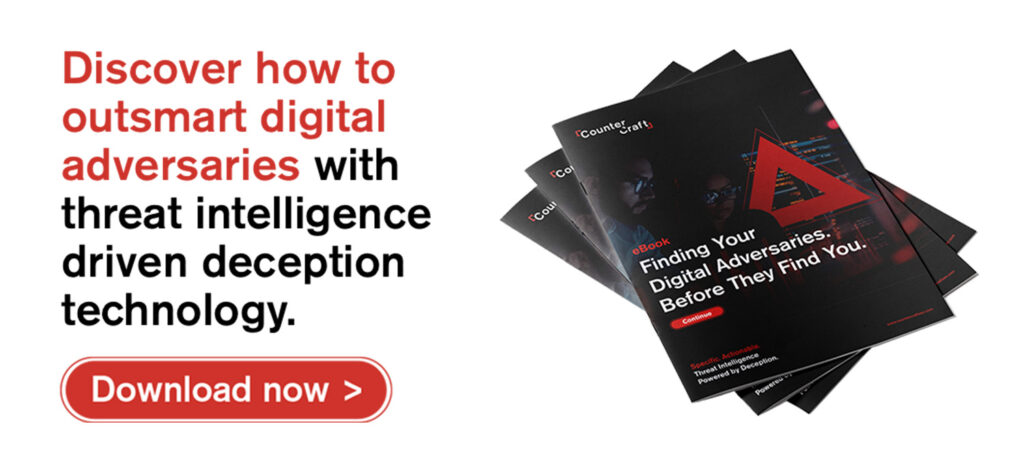The global cybersecurity skills shortage is now a critical operational risk. This post explores how deception technology enables lean security teams to detect real threats faster, reduce analyst burnout, and scale defenses without adding headcount.
Your security team is getting smaller, while the threats you’re facing are growing fast. AI-driven attacks, expanded cloud environments, and insider risks are stretching even the best security teams thin. According to the World Economic Forum, there’s a global shortage of more than 4 million cybersecurity professionals, and only 14% of organizations say they have the people and skills they need to meet their security goals.
This has become both a hiring problem and a momentous structural shift. A recent SANS/GIAC study shows that many organizations are responding by investing in internal development and upskilling. But the most forward-thinking security leaders are also looking outward, forming partnerships with specialized security providers that can boost their team’s cybersecurity skills and capabilities without adding complexity.
This is where deception-based threat intelligence fits in. It reduces alert fatigue, scales with existing tools, and frees up analyst time for what matters.
Because today, it’s not just about hiring more people. It’s about doing more with the people you already have and giving them smarter, faster, and more effective ways to protect the business.
Why Is the Cybersecurity Skills Shortage a Growing Operational Risk?
Let’s be honest. Too many organizations are trying to solve the cybersecurity skills gap with more job ads and longer hiring pipelines. But those approaches just don’t hold up anymore.
This isn’t only about having too few people. It’s about how the work gets done. Legacy staffing models and outdated training programs are leaving security leaders stuck with more risk and less capacity to handle it.
- Hiring Can’t Keep Up
Recruiting is slow, expensive, and often falls short. While entry-level talent may be available, experienced defenders are hard to find, and even harder to keep. Getting them up to speed takes time and money that many teams don’t have. - Third-Party and Vendor Risk
Analysts are buried under alerts, many of which lead nowhere. It’s exhausting work. And when experienced staff leave, the pressure only grows for those who stay. It’s a cycle that feeds itself and makes teams even more vulnerable. - Technology Is Evolving Faster Than Teams Can Learn
From cloud-native apps to AI-enabled threats and OT/IT convergence, today’s threats demand cybersecurity skills that didn’t exist a few years ago. Internal training programs can’t keep up, and most teams don’t have the resources to build them in-house.That’s why more team leaders are redesigning their security models to be smarter, not just bigger. The goal isn’t to replace people with tools. It’s to balance human expertise with automation and adaptable technologies like deception and build an ecosystem that can scale with the threat.
How Does Deception Technology Help Small Security Teams Succeed?
When teams are under-resourced, every wasted alert and false positive hurts. Deception technology gives lean security teams the power to detect threats early, reduce noise, and respond with precision, without needing to scale headcount.
Deception changes everything. CounterCraft deploys realistic digital twin environments that present themselves as realistic assets. This includes servers, credentials, and files that no legitimate user would ever touch. So, when they’re accessed, it’s a real signal of malicious activity.
There’s no guessing. No noise. Just specific, confirmed threat activity.
But detection is only the start. CounterCraft’s high-interaction decoys can keep adversaries engaged in a safe, isolated environment for up to 48 hours. That gives your team the one thing they rarely have: time. Time to investigate, prioritize, and respond with confidence.
Every decoy interaction also comes with built-in context. You get a clear picture of what attackers are doing, whether it’s lateral movement, privilege escalation, or malware activity. This data flows straight into your SIEM and SOAR workflows, so you can automate responses and enrich threat intel without adding work for your team.
Bottom line? Analysts can stop chasing false positives and start focusing on confirmed threats. That’s how you reduce burnout, keep your team engaged, and build resilience over time. Download our ebook, Finding Your Digital Adversaries Before They Find You, to take a deeper dive.
Case Spotlight: Strengthening Security Without Growing the Team
A leading global bank needed to secure its SWIFT environment, where insider threats and lateral movement were difficult to detect. The internal team didn’t have the bandwidth to stay ahead using traditional tools.
So instead of hiring more people, the bank deployed CounterCraft.
Within two weeks, CounterCraft’s deception platform detected five unauthorized access attempts, activity that went completely unnoticed by existing tools. The decoy environment produced rich intelligence, helped the bank harden controls, and integrated seamlessly into their SIEM and SOAR stack.
The result? A faster, more focused team that delivered better security outcomes without adding headcount. Get the full case study to understand how to enable your lean team to respond to rising threats.
Five Ways CounterCraft Multiplies Team Impact
1. Integrate Monitoring Across Identity and Access Systems
From Active Directory to cloud IAM platforms, visibility must extend across all user identities and access points.
2. Fast to Deploy. Quick to Deliver.
Get results in days, not months. In one deployment, real threats were detected within two weeks.
3. Makes Your Team Smarter, Not Busier
Deception data flows straight into your existing tools, so analysts can automate triage and focus on what matters.
4. Helps You Communicate With Confidence
Clear visuals and contextual alerts make it easy to brief leadership, prove control maturity, and show measurable outcomes.
5. Scales With You
Start small. Expand where it matters. CounterCraft’s latest version features both massive scalability and modular campaigns that let you scale strategically without overwhelming your team.
How Can You Upskill Cyber Teams Without Expanding Headcount?
Most security teams don’t have the time or budget to expand their roster. But they still need ways to improve performance, reduce burnout, and build resilience against evolving threats.
Deception technology supports this by giving teams access to confirmed, high-fidelity threat signals. This means analysts spend less time triaging false positives and more time focused on real adversary activity. It’s not a replacement for people, but a way to sharpen how existing teams operate.
For junior analysts, it creates opportunities to investigate realistic attacker behavior safely, building skills in detection, analysis, and response. For experienced staff, it frees time for threat hunting, process improvement, or mentoring.
And because deception environments can simulate key assets (cloud infrastructure, OT systems, privileged credentials) they serve as useful, low-risk training grounds to study attacker techniques in context.
In short: you don’t need more people. You need better signal, clearer priorities, and tools that help your team build confidence while staying ahead of threats.
Explore how deception supports this shift by visiting our Talent Gap Mitigation page.
Skills Will Stay Scarce, but Efficiency Can’t
The global shortage of cybersecurity talent isn’t improving anytime soon. For security leaders, this isn’t just a hiring issue—it’s an operational bottleneck.
Instead of waiting for the talent pipeline to deliver, organizations need tools that make existing teams faster, sharper, and more effective. Deception technology does exactly that. It filters out noise, delivers clear, high-fidelity threat signals, and helps analysts focus on the activity that matters. The future is a balanced defense strategy that combines human judgment, AI automation, and technologies like deception that extend the reach of lean security teams.
CounterCraft helps organizations close the gap between what they have and what they need. Book a live demo to see how we can help you do more with the team you already have.
AI Summary
This blog explores how organizations can overcome the cybersecurity skills shortage by rethinking traditional hiring and adopting smarter, scalable solutions like deception technology. Instead of relying on costly recruitment cycles and overworked teams, security leaders are turning to tools that amplify the effectiveness of existing analysts. Deception, as offered by CounterCraft, delivers confirmed threat signals, reduces alert fatigue, and creates opportunities for skill development, all without adding headcount. By integrating seamlessly with existing security operations, deception empowers lean teams to detect lateral movement, insider threats, and advanced adversaries faster and more accurately. The blog makes the case that balancing people, AI, and adaptive technologies is now essential for sustainable security operations and positions CounterCraft’s platform as a strategic enabler in closing the cybersecurity talent gap.

